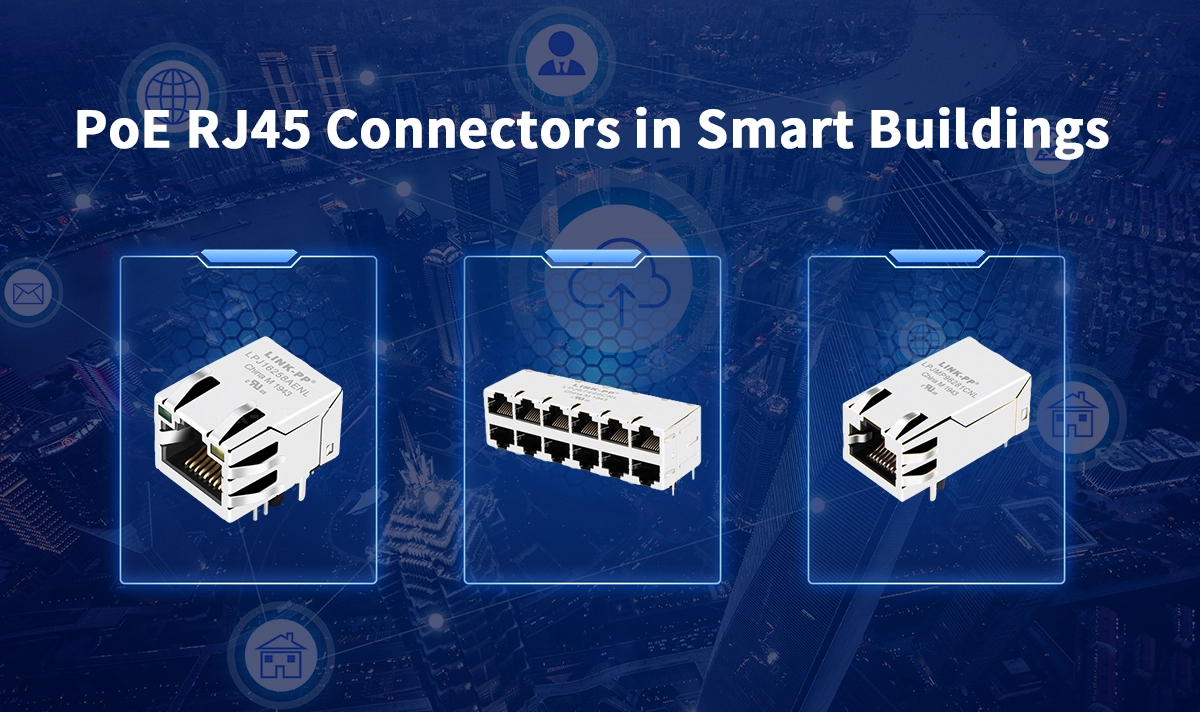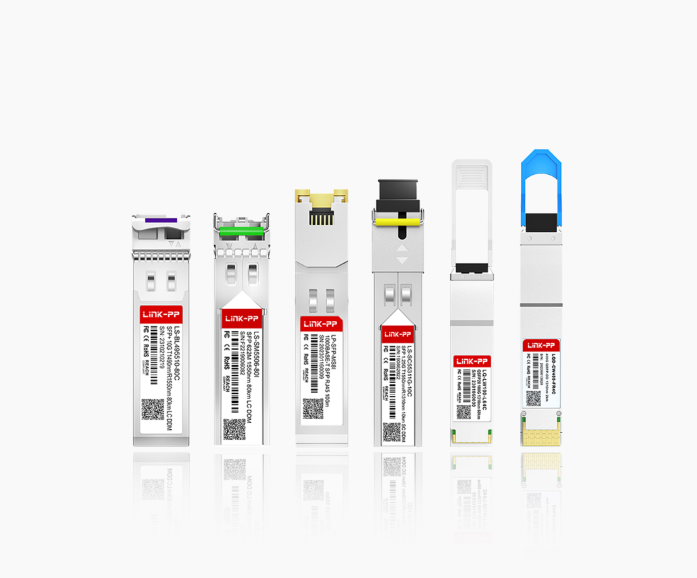
PoE RJ45 connectors have become a foundational component of smart building infrastructure. By combining power and data delivery over a single Ethernet cable, PoE enables scalable deployment of IoT devices and automation systems without dedicated electrical wiring.
In intelligent buildings, PoE RJ45 connectors support sensors, wireless access points, access control systems, IP surveillance, smart lighting, digital signage, and more—driving operational efficiency, safety, and sustainability.
✅ Why PoE RJ45 Connectors Are Essential in Smart Buildings
1. Simplified Power & Network Deployment
PoE delivers DC power + Ethernet data via structured cabling, reducing:
Installation time
Electrical infrastructure costs
Cable congestion and complexity
Dependence on local AC outlets
PoE makes large-scale device rollout more practical across offices, campuses, hotels, airports, and industrial facilities.
2. Centralized Power & Backup Capability
Instead of powering devices individually, PoE devices draw from central PoE switches, allowing:
Central power distribution
Battery backup (UPS) for critical systems
Remote on/off and reset control
Power budgeting and analytics
This centralized approach improves uptime and simplifies maintenance.
3. Enables Dense IoT and Automation Networks
Smart buildings rely on distributed sensors and controllers. PoE RJ45 connectors power and connect:
Air-quality and environmental sensors
Occupancy and motion detectors
Smart thermostats and HVAC controllers
Room booking and kiosk panels
PoE reduces the barrier to deploying hundreds or thousands of low-power smart devices.
4. Support for IP Security & Access Control
Security systems are a core element of intelligent building design. PoE powers:
Biometric readers
Smart door locks
Intercom and visitor terminals
PoE+ and PoE++ supply higher wattage for PTZ dome cameras and multi-sensor security units.
5. Powering Wi-Fi & Digital Services
Modern buildings depend on Wi-Fi 6/6E access points and edge IoT gateways. PoE RJ45 connectors provide these devices with consistent power and high-speed connectivity—crucial for campus-wide mobility and cloud services.
6. PoE Lighting Adoption
PoE lighting systems enhance sustainability and reduce operating costs. Benefits include:
Fine-grained energy control
Integration with occupancy data
Centralized light scheduling
Tunable brightness and color temperature
PoE lighting aligns with LEED and WELL building standards for efficient and healthy buildings.
✅ Key Features of PoE RJ45 Connectors for Smart Buildings
High isolation transformers to protect circuits
Shielded or unshielded configurations for EMI control
Industrial-grade temperature options
Low power dissipation
Support for Gigabit and multi-Gigabit Ethernet
Integrated magnetics for compact, high-reliability design
Reliable magnetics are critical as the network carries both signal and power.
✅ LINK-PP PoE RJ45 Connectors for Smart Buildings
LINK-PP delivers PoE-ready RJ45 connectors widely used in enterprise and IoT infrastructure.
▲ IEEE 802.3af / 802.3at / 802.3bt compliant
▲ 1G / 2.5G / 10G options
▲ Industrial temperature variants
▲ EMI-optimized integrated magnetics
▲ Compatible with major networking vendors

🔗 Product Links
Recommended Applications
Smart offices & smart campuses
Intelligent security networks
PoE lighting and HVAC systems
Edge computing nodes
Industrial automation and factory buildings
Public venues and transportation hubs
LINK-PP solutions are trusted in access points, switches, gateways, smart controllers, and building automation platforms.
✅ Conclusion
PoE RJ45 connectors are a cornerstone of smart building architecture. By combining power delivery and high-speed data in one port, they enable:
Dense IoT and automation deployment
Centralized and energy-efficient power control
Easier scalability and reduced installation cost
Reliable connectivity for mission-critical systems
As smart building adoption accelerates, PoE technology—and the high-quality RJ45 connectors behind it—will continue to be pivotal to intelligent infrastructure design.
✅ Frequently Asked Questions (FAQ)
▶ What is a PoE RJ45 connector in smart buildings?
A PoE RJ45 connector is an Ethernet interface with integrated magnetics that enables both data transmission and DC power delivery over a single twisted-pair cable. In smart buildings, it powers IoT devices such as sensors, cameras, door access readers, and wireless access points while providing network connectivity.
▶ Why is PoE preferred in smart building infrastructure?
PoE reduces cabling complexity, eliminates local AC power outlets, streamlines installation, and enables centralized UPS backup and power monitoring. It supports scalable and flexible deployment of intelligent building technologies.
▶ What types of devices use PoE in smart buildings?
Common PoE-powered devices include:
Wi-Fi access points (APs)
IP surveillance cameras (including PTZ)
Smart lighting systems
Environmental and occupancy sensors
Digital signage and kiosks
Access control readers and intercoms
Building automation gateways and controllers
▶ What PoE standard should I choose for smart building applications?
PoE (802.3af) – up to 15.4W, suitable for basic sensors and IP phones
PoE+ (802.3at) – up to 30W, ideal for Wi-Fi APs and HD cameras
PoE++ (802.3bt) – up to 60–90W, recommended for PTZ cameras, lighting, displays
▶ Is PoE safe for building electrical systems?
Yes. PoE uses low-voltage DC (below 57V), compliant with IEC safety standards. Integrated magnetics and isolation features in PoE RJ45 connectors provide circuit protection and ensure EMI stability.
▶ Can PoE improve building energy efficiency?
Absolutely. PoE enables centralized power control, energy metering, and demand-based operation. Combined with occupancy sensors and smart lighting, it supports LEED/WELL energy optimization goals.
▶ Why choose integrated-magnetics RJ45 connectors?
Integrated magnetics simplify PCB design, improve EMI performance, enhance signal integrity, and increase long-term reliability — critical for dense IoT deployments in intelligent buildings.




